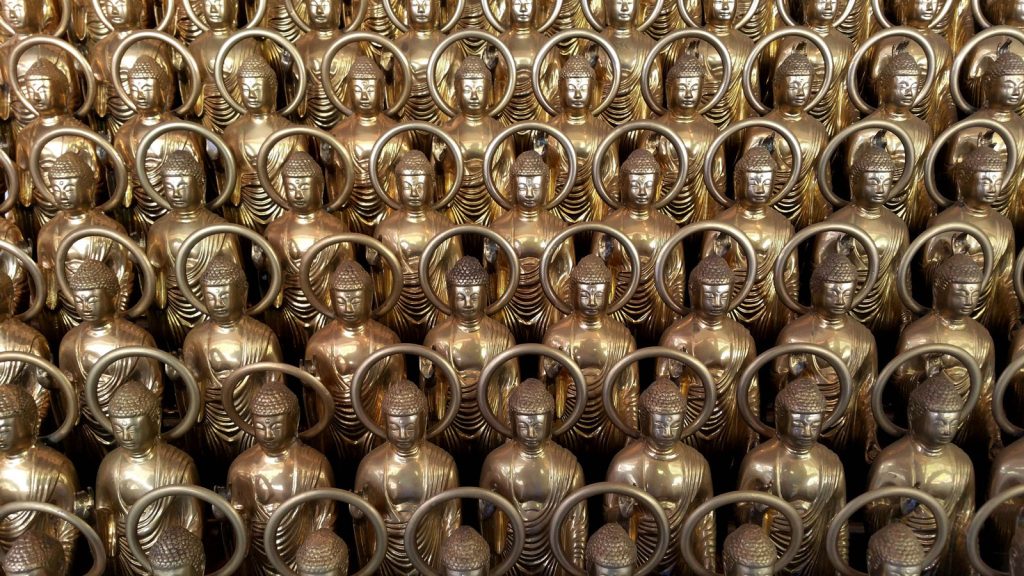Nothing is permanent, so everything is precious. Here’s a selection of some happenings—fleeting or otherwise—in the Buddhist world this week.
Number of American Meditators Triples
The number of Americans who meditate more than tripled in five years, according to a government report. A 2012 survey by the Centers for Disease Control and Prevention found that 4 percent of the participants had meditated that year. But in 2017, the percentage of meditators jumped to 14.3. For children, the increase was even more dramatic—from less than 1 percent in 2012 to 5 percent 2017. Over the same period, the number of people who practice yoga increased by 55 percent, Vox.com notes.
Dalai Lama Suggests Pope-like Selection of Successor
His Holiness the 14th Dalai Lama has suggested that his successor could be picked from other high-ranking lamas, similar to how the pope is selected, rather than by the traditional process of identifying a reincarnation, the Japanese Mainichi Shimbun newspaper reports. “The kind of pope system is . . . possible—to choose among the high lama, or high scholars,” the Dalai Lama, 83, said in an interview with the paper, adding that he may name his own successor. The Dalai Lama is traditionally identified by the Panchen Lama, who is, in turn, recognized by the Dalai Lama. But in 1995, Chinese authorities arrested the 11th Panchen Lama, who was six years old at the time, and have kept him in their custody ever since. In April, the Dalai Lama said he had seen proof that the Panchen Lama was still alive. The Dalai Lama often expresses concern that the Chinese government will use the Panchen Lama to designate their own Dalai Lama in an attempt to stifle the spiritual leader’s advocacy for Tibetan independence. He has signaled that he may choose not to reincarnate at all—and this latest statement may indicate his intention to choose a successor through more secular means.
Blessing for Broken Glasses
Japanese Buddhist monks held a service for 200 pairs of old eyeglasses on November 8, CNN reports. The annual ceremony to “show gratitude” to the glasses for “their years of service” has taken place at the Ichibata Yakushi Temple in Shimane Prefecture for the past 30 years, according to Japan Today. The Tendai Buddhist temple—built in 894 CE around a statue of Yakushi Nyorai, a bodhisattva of medicine and healing—has become a pilgrimage site for Buddhists who suffer from eye problems. According to local lore, the “medicine Buddha” statue was pulled out of the Sea of Japan by a fisherman whose mother’s eyesight was miraculously restored shortly after the discovery. The Ichibata clergy created the glasses ceremony in response to repeated requests to bless old spectacles. The glasses that are still usable, such as those discarded because of a change in prescription, are donated to a group in India that distributes them to people in need.
Young Man Is 154th Tibetan to Self-Immolate in Protest
A Tibetan man self-immolated on November 4 in protest of Chinese rule over the Tibetan Autonomous Region, Radio Free Asia (RFA) reports. The 23-year-old man, Dopo, reportedly shouted his support for His Holiness the 14th Dalai Lama, who has lived in exile since 1959, before setting himself on fire in Ngaba county in the Chinese province of Sichuan, according to RFA. Dopo is the 154th Tibetan living under Chinese rule to self-immolate since the deadly form of protest began in 2009.
Related: Burning for the Buddha
Meanwhile, the advocacy group Human Rights Watch (HRW) released a report on October 30 saying that Chinese authorities are trying to turn Tibetan monastics into mouthpieces for propaganda. Under China’s “Four Standards” policy, monks and nuns have to demonstrate “political reliability” and refrain from taking part in political protests, according to HRW. To this end, Buddhists have been pressured to attend training sessions to “strengthen their political beliefs,” the state-run Global Times reports.
Thank you for subscribing to Tricycle! As a nonprofit, we depend on readers like you to keep Buddhist teachings and practices widely available.
